MREs, or Meals Ready to Eat, have been a staple military supply for decades. For those of us in the survival world, we all know what they are, but we also know that they’re pretty pricey to buy. Also, many of them don’t taste so great.
So, since we’re all about doing things for ourselves, I wondered if it was possible to make MREs at home. It turns out that it is, and you don’t even need any high-dollar equipment.
There are a few things that you need to keep in mind when you’re making MREs. First, you want high-calorie, nutrient-dense foods. Depending on how long you may need them, you may need to ration them to one per day in order to be able to carry enough to get you through. Make sure that each MRE has at least 1200 calories if you’re only going to eat one per day. That’s the minimum for you to survive.
Next, you need to consider the weight and mass of the MRE. You want them to fit in your bug-out bag so you’re going to be carrying them, along with all of your other necessities. You also want to make foods with long shelf lives; the shorter the shelf life, the more often you’re going to need to replace them.
Consider everything that you’ll need for a full meal and include it in your MRE. This may include single-serving instant coffee packs in your breakfast MREs or single-serving Gatorade packets in your other MREs. You can buy individual water packets to include as well.
For this article, we’re going to use a vacuum sealer because that’s the best way to ensure longer shelf life. If you don’t have a vacuum sealer, we suggest buying one. If you don’t want to buy one, we’re going to include some ideas for making MRE packages using food that’s already vacuum packed or otherwise sealed to increase shelf life.
Mylar Bags vs. Plastic Bags
While Mylar bags are far superior to plastic bags, they’re also more expensive and require oxygen absorbers and high-temperature (at least 400 degrees F) sealers. Personally, my flatiron for my hair goes that high and works for sealing Mylar but if you don’t want to spend the extra money, plastic, vacuum-sealed bags will work. Mylar bags offer 10-12 year shelf life while food vacuum sealed in plastic bags will last for 1-3 years depending upon what’s in it.
Types of Food
There are a few different methods that you can use to preserve your MREs. You can use any of these:
- Dehydrated foods that you either make yourself or purchase.
- Freeze-dried foods
- Powdered foods
- Food that you cook, then vacuum seal
- Pre-bought vacuum sealed meats such as chicken, tuna, spam and salmon
- Dry foods that you add water to, such as instant oatmeal, instant mashed potatoes, and instant rice
- Salt and pepper packets that you get from fast-food restaurants
Remember that if you include dry foods that need to be reconstituted with water, you need to include a packet of water or be prepared to use water from your supply. The water pouches are good because you can just tape them to the outside of the MRE and add it to the meal. An added bonus is that if you run out of water, you have an extra pack.
Should you want to pack the extra weight, there are MRE heaters made from a combination of magnesium, iron and salt. When you add water, they reach temperatures of over 100 degrees and can heat a meal up in 10-12 minutes. They’re light-weight and don’t take up much space. Trioxane heating bars are also an old-school option and can also be used as fire starters. You could also use either to heat water for your coffee.
We’re now going to discuss how to make some MREs that are both tasty and calorie-dense which either use dried foods that you reconstitute or you create using prepackaged foods. Each recipe will be enough to make 1 MRE.
Seasoning Packets
Pre-made seasoning packets will add flavor to your MREs – something that the original military MREs were seriously lacking in. If you’d like, you can simply use store-bought dried seasonings to your MRE before you seal it, or you can make your own using dried herbs and spices. Here are some good examples. Each recipe makes about ¼ cup seasoning, which you can then ration into 1-tbsp portions in little zip-lock jewelry baggies and toss them in your MRE kit.
Italian Seasoning Blend
- 1 tbsp. oregano
- 1 1/2 tbsp. parsley
- 1 1/2 tbsp. basil
- 1/2 tbsp. garlic powder
- 1/2 tsp. salt
- 1/2 tsp. rosemary
Southwest Seasoning Blend
- 1 tbsp. chili powder
- 1 tbsp. paprika
- 1/2 tbsp. ground coriander
- 1/2 tbsp. garlic powder
- 1 tsp. salt
- 1 tsp. ground cumin
- 1/2 tsp. cayenne pepper
- 1/2 tsp. black pepper
- 1/2 tsp. dried oregano
Reconstituted MREs
You’ll need water packs for these, and a heater or other means to heat the water.
Southwest Chicken and Rice
- 1 pack vacuum sealed single-serving chicken
- 1/2 cup instant rice
- 1 packet southwest seasoning mix
- 1 Tbsp. dehydrated veggies, your choice
- 1 water packet
Instructions:
Add the rice and veggies to a bag and vacuum pack. Add this, along with the seasoning packet and the chicken to your MRE bag. Tape the water packet to the outside of the MRE bag.
Spam, Gravy and Egg Scramble
- 1 single-serving vacuum packed spam
- 3 Tbsp. powdered sausage or peppered gravy mix
- 2 Tbsp. powdered egg
- 1 4-oz water pack
- 1 single-serving pack instant coffee
Instructions:
Place gravy mix and powdered egg in 2 separate small bags and ziplock or vacuum seal. Add both packets, along with spam and instant coffee packet, to your MRE bag. Prepare according to what kind of bag you’re using. Tape water packet to bag.
Fruit-packed Oatmeal
- 2 packets instant oatmeal
- 2 single serving packets of your favorite dried fruits
- 1 4-oz pack water
- 1 single-serving pack instant coffee
Instructions:
Add packets of instant oatmeal, fruit and coffee to your MRE bag. If you like cream or sugar in your coffee, add packs of those to bag according to taste. Seal bag accordingly. Tape water to outside of bag.
Shit on a Shingle
- 1 3-oz packet dried beef
- 1/4 cup peppered gravy mix
- 2 4-oz packets of water
- 1 single-serving pack of instant coffee or Gatorade
- 4 2-packs of saltine crackers (you may be able to find bigger single-serving packs, but these are free at restaurants!)
Instructions:
Vacuum pack the gravy mix. Put all ingredients except water in your MRE bag. Tape water packets to the outside of the bag.
There are single-serving vacuum packed portions of tuna and chicken that you can add to your MRE bag along with a spice packet of your choice, crackers, a pack of mayo, and packs of mayo, pickle relish, salt and pepper in order to make tuna or chicken salad on the go, too. Just toss the individual packs into your MRE bag and you’ve got a meal that’s really good for you considering the situation.
I just touched on some extremely basic recipes and I know that I didn’t cover nearly enough ground, so if you have experience making or eating MRE’s, please share thoughts and recipes with us in the comments section below. I saw some awesome dessert recipes out there too, so PLEASE share any of those that you have because sometimes a moral boost in the form of apple crisp is amazing!
This article has been written by Theresa Crouse for Survivopedia.


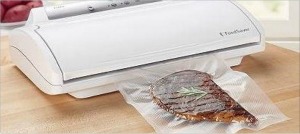
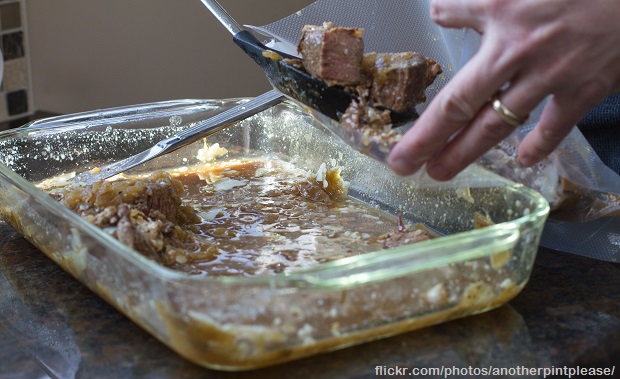

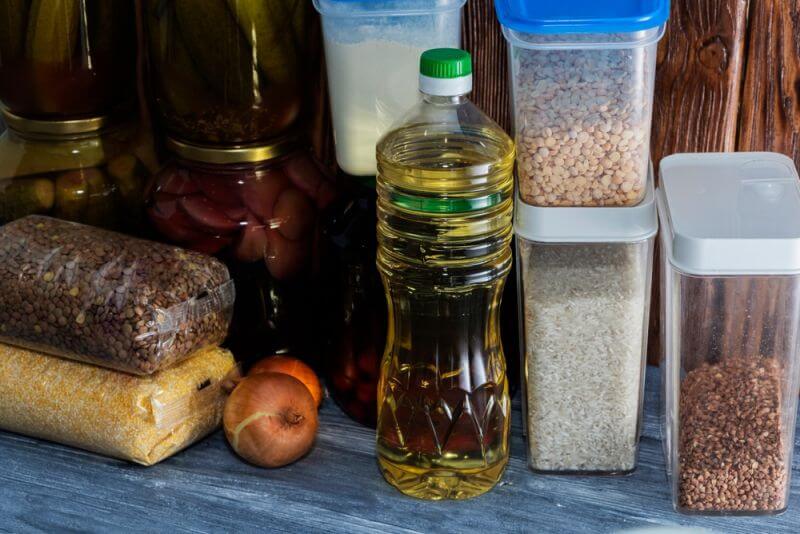

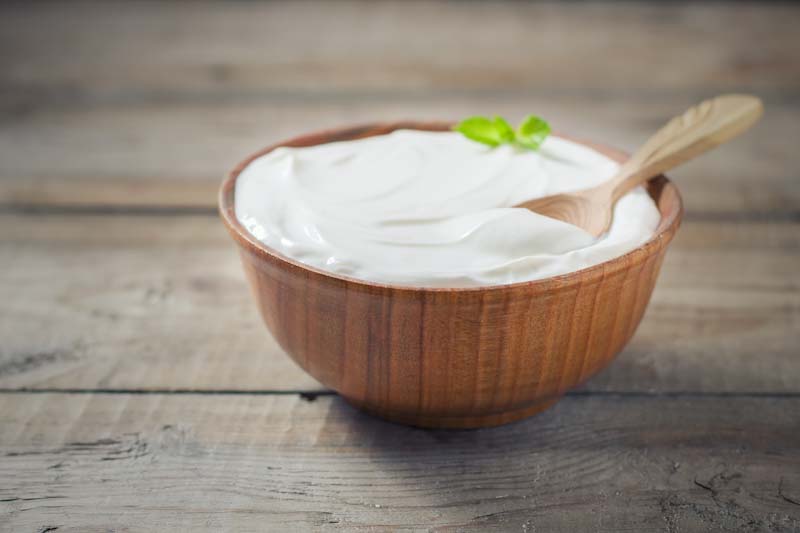
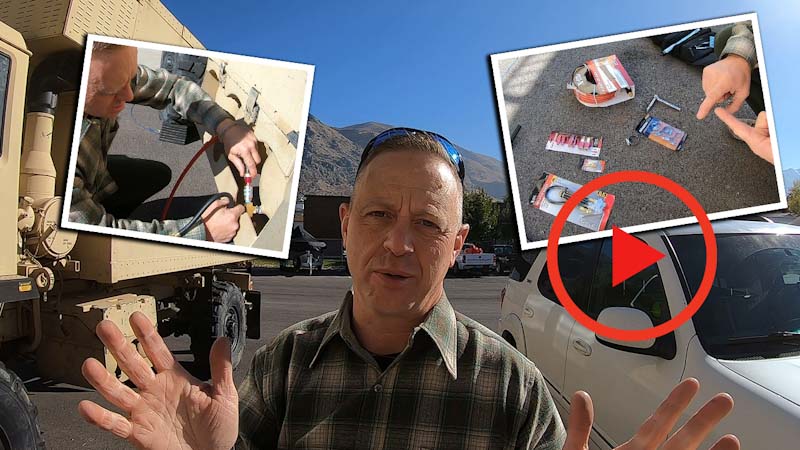

Desiree | August 10, 2015
|
So for storing chicken or meat, you cook it then vacuum seal it? Does it have to be cooked first? What’s the shelf life? Thanks!
tony | August 16, 2015
|
No refridge req’d:
dehydrate your own beef jerkey. lasts along time in bags
buy canned veggies when on sale
buy pasta when on sale
buy pnut butter when on sale
store everything in a cool dry non lit place. i live in n. fl. where humidity is present. i use the pole barn & porch
all the above have good shelf life
Jeepdog | August 23, 2015
|
You store in the pole barn and porch in FL? I am in SW Florida and I am scared to store food outside. I only store my animal feed. Seems it would be way too hot! When we first moved here I stored my canned tomatoes in the barn and after a year, the lids were all corroded with rust. Please, I would like to hear more about how you store.
David Smith | September 12, 2016
|
you’ve probably already found out about using a sharpie marker to label cans before varnishing them, but i live in a port of England facing the north sea and I’ve tried it 4 years ago and still have intact cans stored in an attic.
kevin | August 10, 2015
|
I tried this some years ago and I still have some that are still good make a normal batch of home made chili and put in a dehydrator let TOTAL Y dry out so there is NO water left in it put in sealed plastic bag and your all set when it comes time eat it either put it in boiling water for 4 minutes or if its for every day use put it in a microwave for 4 minutes
cATE | August 10, 2015
|
Maybe more thought should have been given to the photo used in this post. Someone is bagging up what looks like cooked beef chunks into a vacuum seal bag. The only thing you can do with that is put it in the freezer to serve later. That cannot go into a MRE meal. There are so many other pictures of dehydrated foods, spices and the like that would have been more appropriate for this article. Someone might get the wrong idea in spite of not suggesting anyone do that.
Joellen | February 5, 2021
|
Thank you for saying that! I was wondering about those pictures…
Owen | August 10, 2015
|
While teaching backpacking skills to scouts, one was teaching them to make a soup that they like, (split pea is what I used)
Like Kevin says, measure out 2 cups and dry – when extremely dry, crumble it into a zip lock or vacuum bag. You know to add enough hot water to make 2 cups (the size of my bowl).
Keeps a long while.
Indy B | September 13, 2016
|
My favorite survival recipes come from a boy scout backpacking recipe booklet I found on the internet. Troop 344 posted it and I printed it for future reference. I have tried several of the recipes and they are quite tasty.
randy | September 15, 2016
|
Do you have the link still?
lADYBUG | September 16, 2016
|
I found this booklet online, plus another one for dutch oven cooking (that one runs 160 pages!) The backpacking booklet runs about 36. They are both in PDF form. The link is: http://www.bsa344.com/Backpacking%20 recipes. Using the link above you can find the dutch oven link, which is too lengthy to type in here. Lots of symbols. Bonus: Neat cartoons.
Carol L | September 27, 2023
|
link not complete or valid…could you repost the link?
Marcella Cagle | August 10, 2015
|
I am afraid this might result in food poisoning if a person does not follow the instructions exactly!!!!!
Marcella Cagle | August 10, 2015
|
I would like to know whether or not anyone has gotten food poisoning from processing their own survival food? Sounds dangerous to me.
Bigfoot | August 11, 2015
|
Good question, Marcella. Remember though, life is a risk. When teaching my granddaughter to drive, I told her never, ever cross the double yellow line. Except when … . Everything you do is a choice, and you have to weigh the consequences against the risk. I wouldn’t do this for home use, but it sounds good for your b-o-b. You can only live on roots and berries for so long.
Hunkerdown | August 11, 2015
|
Yes, I poisoned myself from eating improperly stored tomatoes. The problem was, in 2011 I dehydrated tomatoes and did not let them cool to room temperature before putting them in the bags (sealed plastic). As they cooled inside they developed condensation moisture and ‘soured’ as I call it. In 2014 I started eating them and it was not a pleasant experience. Most of the tomatoes, about 50 quart bags had to be discarded into the compost heap. I was new to dehydrating in 2011 and there was a learning curve. Now we use only mylar bags and of course let food cool before storing. Processing your own preps is not dangerous if done correctly. Please understand the above situation was from my own inexperience at that time, plus I just got in a hurry that day: Not smart. But now, with the mistakes behind me, I trust my food. But, we need to eat from our preps, so as to find out these kind of problems before shft. Thanks and hope this answered your question. PS: Once you start making your own food preps, I promise you will never order online again. There is nothing more comforting than knowing you did it yourself. And your food, if done right, is of much, much higher nutritional quality and cleanliness than what will ever be processed, packed, and shipped to your front door by unknown hands. And doing your own is also much, much easier on the bank account. thanks again
Jeepdog | August 23, 2015
|
You store in the pole barn and porch in FL? I am in SW Florida and I am scared to store food outside. I only store my animal feed. Seems it would be way too hot! When we first moved here I stored my canned tomatoes in the barn and after a year, the lids were all corroded with rust. Please, I would like to hear more about how you store.
atony | August 24, 2015
|
JEEPDOG
will get back 2 u. not feeling well right now
Jeepdog | August 23, 2015
|
When dehydrating any item, you must put into a glass jar/ziploc bag for a few days of conditioning prior to sealing for storage. This allows your items to come back to room temperature and after a few days, if there is still moisture in the food item, you will see it on the surface of your glass jar or ziploc. If moisture is detected, put back in dehydrator for another go, then follow condition procedures. If no moisture is detected, then seal for storage.
PatriciaD | August 11, 2015
|
Just a comment to say that it is stealing to take s/p, catsup, or any other items from a restaurant or fast food place that you do not eat with the meal you’re purchasing. Just buy your own. Not trying to be a pest just sayin’!! If you owned the restaurant how would you feel if everyone filled their shtf pantry with your items?
Scott | August 12, 2015
|
http://www.minimus.biz/Condiments.aspx if you want to buy single packets of any type of condiment or other small items such as hotel-sized soaps, individual packs of detergent or laundry soaps, or other such items. This way you don’t have to take them from restaurants.
Karen | August 13, 2015
|
http://www.minimus.biz/Condiments.aspx is awesome!! Thanks for posting. 🙂
joellen | January 23, 2020
|
IF they were given to you as part of your meal it is not stealing. If they are in bins for you to help yourself (intent of using with your food) and you take handsful of them without using them in the restaurant that IS stealing.
readerpro | August 11, 2015
|
I am pretty good at making jams and jellies and canning applesauce. The only way that I can assure that nasty germs are held at bay is to hot-pack the food. For food that is not dehydrated, like the tomatoes mentioned above, I do not understand how letting the food cool to room temperature before packing would solve the spoilage problem he described. Obviously , there was still moisture in the tomatoes.
I used glass jars for storage, but the mylar/polyester bags could be used instead.
A. Mark Tristan | August 11, 2015
|
Hello,
I am interested in homemade MREs, but would like to know if they have to be kept in the fridge or freezer. Also, I would like to know where and what brand to purchase for the best oxygen absorbers and high-temperature sealers, vacuum sealers and bags. Thank you for your time and assistance.
Regards,
A. Mark Tristan
Hunkerdown | August 11, 2015
|
@Mr. Mark Tristan: Reference the fridge or freezer, we are told that the best temperature range is between 65 and 70 degrees. So, I guess that takes out the refrig. Keep in mind we haven’t done any meat through the dehydrator, only veggies and fruits. We substitute nuts of all kinds, and beans and rice for meat (protein). Reference the other stuff, please, please save your money and do not buy plastic bags or high temp sealers, honestly it is a waste of money. Plastic bags are a pitiful stand in for mylar and a quality vacuum sealer is in excess of $200.00 Yankee Dollars. Problems galore abound with plastic. Light gets in, air gets in, dehydrated veggies such a broccoli, cauliflower, and many others have sharp edges and will puncture the plastic. Apples and other fruits also have sharp edges when dried and again puncture the plastic. Mylar is the best by far. You can get a hand pump for a few dollars from any builders supply to get the air out of the mylar bag and then you have years of good food inside. Note: Always use an oxygen absorber one size larger than what you actually need. If you are using quart mylar, then use an oxygen absorber recommended for a gallon. If we are doing 5 gallon buckets then we throw in enough oxygen abs. for ten gallons. Always buy your oxygen absorbers in packets of 10 or less if possible. If you purchase 100 then get 10 packets of 10 each. Because once oxygen abs. are activated there is no kill switch, they just keep on working until they fizzle, and that is it. We buy packs of ten and get ten jars or bags ready before opening the packet. You need to have them all sealed within 5 and no more minutes after opening. Another note: Buy thick mylar, at least 4mil., anything less and it can puncture too. Some people use an iron to seal mylar, and we used to too, but the ‘flat iron’ for hair works better and is a lot quicker. In closing, we are going to cross the line and get into something that is really none of our business. But there is a good chance that time is getting very short and already some items are not available. Ex. Our Sam’s in Victoria, Tx. completely sold out of walnuts and some other nuts and have been out for nearly two months. That’s a no kidder. So, if you will accept it, here is a little cheater note. Dinty Moore stew last for three years according to be best if eaten by date. Probably longer, but at least three years. Their beef stew has beef naturally, along with potatoes and carrots. It isn’t homemade, but it is a good eat. Buy yourself several dozen cans of this, some nuts, and canned veggies and you are prepped for six months, if you are only feeding yourself. The beef stew comes in a 38oz. can for $3.82 Yankee money down here in Victoria. If teotwawki holds off long enough for you to dehydrate veggies then when you open the can, drop the dried veggies into the gravy and wait 20 minutes and they will rehydrate to give you a really good nourishing meal. We have gobs of cans of the stuff along with dehydrated veggies buried across the countryside in 5 gallon buckets from Home Depot. Best wishes to you and if you like you can reach us at [email protected]. God bless and stay safe out there.
Grumpy | March 10, 2019
|
Harvest right foods sells Mylar bags, sealing devices and oxy absorbing packets. They also sell freeze dryers if one is interested, although they are fairly expensive. All of the above are top quality products that I have purchased myself. Look them up. Very dependable company.
I will buy from them again in the future.
Regards
Grumpyoldman
Carol | August 11, 2015
|
It seems like you would need more water to hydrate the dried ffod in your MREs, but I love the idea.
GDuff | August 11, 2015
|
Are these MREs to be kept in the fridge or freezer?I was looking for MRWs that need no refridge.
LAzy sherpa | August 12, 2015
|
one I’m fond of is a kind of chinese style meal made using the pouches of tuna fish from supermarket. Add it to instant rice, dried veggies, pkg of nuts, and a pkg of soy sauce. I also put crushed rep pepper flakes and garlic powder in for seasoning.
Pingback:DIY: How To Make MREs At Home | TheSurvivalPlaceBlog | August 12, 2015
|
PrepNow | August 12, 2015
|
My personal opinion, just like any other type of food preservation food safety is a must. You get complacent – you get sick. Cross contamination, improper handling, not sufficiently dehydrated, etc will not only ruin the batch but will make you ill. I would treat making and storing MRE’s just like other stored food items. Date them with “made” date and “use by” date and rotate the stock. Don’t make a MRE you would not want to eat.
C.N. | August 13, 2015
|
I’ve never thought you could make MRE at home. Great article.
Pingback:8 Signs Your Stored Foods Could Kill You | Survival skills, survival guns, survival guide | September 23, 2015
|
Pingback:Nuclear Prepping On Fast Forward: 10 Cheap & Easy To-Dos | Survivopedia | October 1, 2017
|
Arizona | July 2, 2019
|
It still has the same inherent drawback that issue rations do: THEY’RE A WET PACK FOOD! Wet pack translates to increased weight and bulk, which you do NOT want in your bag. I keep telling everyone who posts this foolishness: “pack dehydrated foods and add water later.” Even things like flapjack bars (NOT pancakes) are lighter and can still be eaten on the go. Fruitcake is another good trail ration, since it gives a lot of energy for its size, ever watch the film Iron Will? Dehydrated meat blocks are another option. The latter is similar to pemmican, but with only enough suet to bind the meat into a stiff dough. One block the size of a box of matches and one inch thick can keep a person going for an entire day; two if rationed tighter or combined with something else. A person could even get Cliff bars and make out better than meals whose mass is anywhere from 1/4 to 1/2 water.
Carol L | September 27, 2023
|
“Food that you cook, then vacuum seal”….uhm, NO! Most all vacuum sealed foods require either refrigeration or freezing, as they are NOT SHELF STABLE!!!
ALL FOODS USED IN MAKING MRE’S MUST BE SHELF STABLE!!!!!
ONLY things that require no refrigeration, or freezing can be used in MRE’s.
Please use caution and common sense